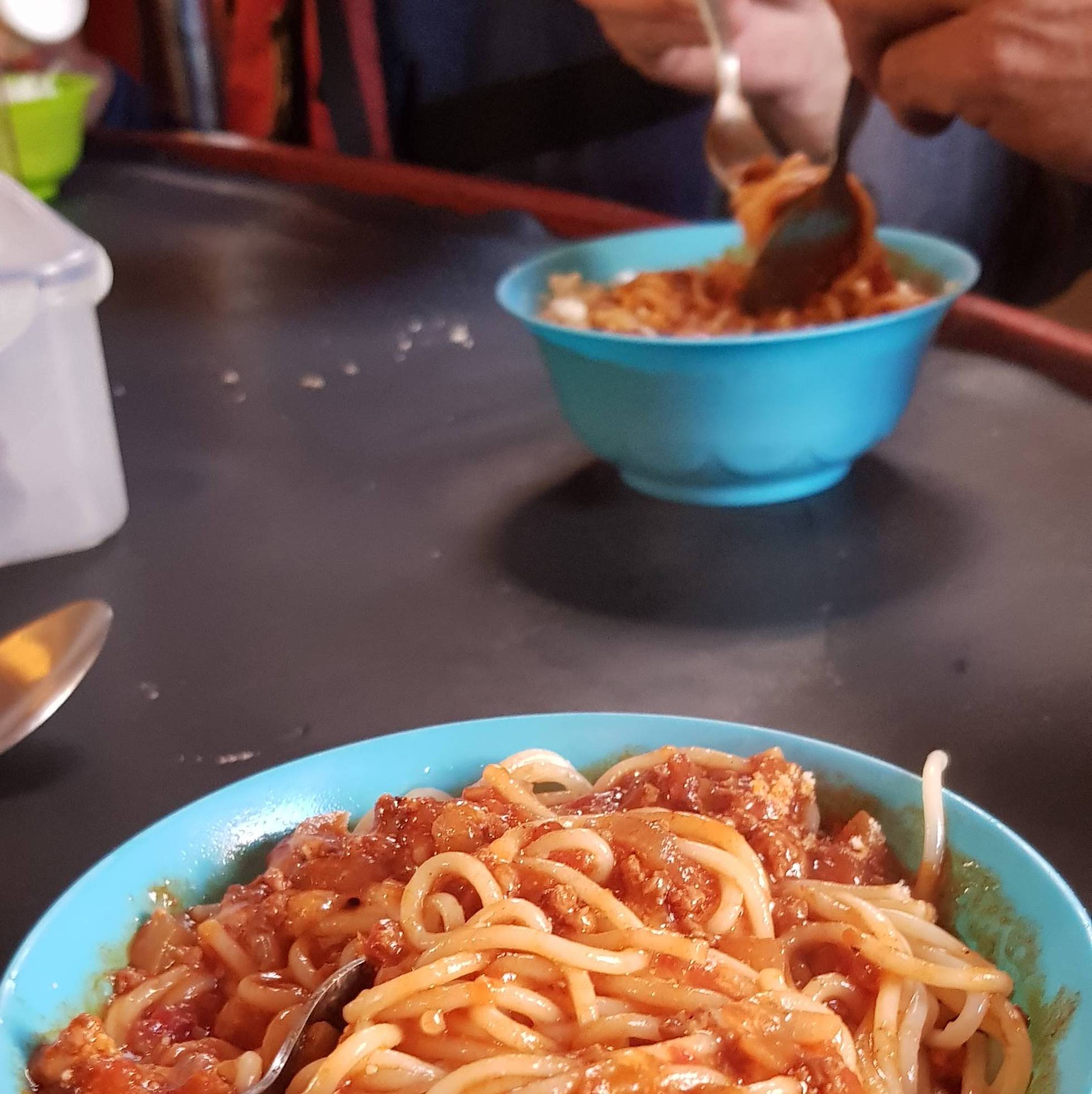Cooking at 45 Degrees
Heather gives us insight into how to prepare tasty meals at sea - no matter how rough the weather

by Heather Deary · Sat 30 Sep 2023
How to cook at 45 Degrees?
I was asked to write a blog about how to cook at 45 degrees about 2000 words they said. In the spirit of the 1970’s game show ‘Name that tune’ I can answer that in one! CAREFULLY.
Joking apart there is something to be said for creating something hot, nourishing and hopefully palatable for your crew mates who have been up on deck for hours in the wind, possibly rain and without doubt the wet. Watching them come backwards down the companionway, soggy and steaming into the relative warmth - at least out of the wind - to see what delicious delights you have managed to wrangle from some dried pasta, a few tins of tomatoes, peas, a desiccated onion and a handful of chorizo bits.
Eyes wide, hands cold and wrinkly from the wet they sit on the saloon seats peeling away wet foulies and look expectantly towards the galley. Have you pulled it off? Will they eat then collapse satisfied and exhausted into a happy yet short slumber until the next watch or perhaps they are up next needing to work some magic at the working end of a gimbled stove and a few tins of tuna and some grated cheese and a packet of tortillas.

Image: The BIG shop before our epic South Atlantic Adventure to St. Helena.
Heather's Secrets to Cooking at 45 Degrees
Secret 1: Have the food ready on time
My first secret to cooking at 45 degrees is make sure the food is ready ON TIME. It doesn’t matter if it’s not the finest meal you ever cooked. Things it definitely does need:
- Is it hot?
- Is it ready on time?
- Is there enough? Are there seconds?
- Can the crew scarf it down without it touching the sides and then go and collapse exhausted into their bunk?
- Is there something for pudding? Does it come with custard?
Secret 2: Look after yourself
My second secret to cooking at 45 degrees is look after yourself. It’s really easy when you are the one on the support watch to focus entirely on the on deck crew and have they got hot /cold drinks, are their snack tummies full. Is the meal going to be ready on time? I found so many times that after cooking a simple but hearty meal I didn’t eat myself, or I left the last often smallest portion for myself and then went to bed hungry as the thing I made just didn’t seem right after spending so much time and energy on it prep and cooking.
TOP TIP eat your meal early, look after yourself too, don’t forget you need to be hydrated too.
Secret 3: Give yourself LOADS of time
My third secret to making a not always delicious but a hearty anyway meal for your crew mates is to start waaaaaay earlier than you would if you were making the same thing at home. Give yourself loads of time. Remember you are bracing yourself, balancing on a shaky floaty platform that is prone to make ridiculous random motions while trying to cook on a single gas burner or in an oven that has two settings, off or volcano. Things are not straightforward on a sailing boat especially when beating into the wind, the boat slamming into the waves, just staying on your feet takes loads of energy never mind trying to create julienne of carrots or make canapes. I am sure I said it in another blog but
TOP TIP Keep it simple, start early be ready on time and then sit back and bask in the glory when your simple, hot food is scoffed down by your crew mates.

Secret 4: Use your brain
My fourth secret tip to cooking at 45 degrees and use your brain. Think about which way the boat is heeling and use it to your advantage, if you can make sure the pan on the stove is on the most effective burner for the angle of the boat. If you have an option wedge yourself in so you don’t get thrown about, if there are more than one option to use a surface to prep use the one that means the food isn’t going to be launched into the ether. Use damp cloths under your chopping board to stop it sliding, always make sure sharp knives are safe and not likely to fly. Pour hot liquids carefully over the sink and wear a suitable protective apron or better still your foulies and boots if the sea state is risky to prevent burns.
TOP TIP Always gimble the stove, think about the tack you are on and try and use it to your advantage.
This anecdote might not be that helpful, but it just came into my head.
One of my favourite foody days was crossing the Atlantic and our world was like a washing machine HUGE seas and for whatever reason we had moved to a 2-watch system, so the support watch covered the whole day making breakfast dinner and tea. We normally ran a 3-watch system but that is a blog for another day. The pros and cons of the different watch systems.
I digress.
I was on watch on my own due to uneven numbers and I was responsible for feeding the crew all day, we were flying along, leading our race and homeward bound and still had some extra bits and pieces in the stores so on one of the days with the biggest seas I made roast potatoes, roast pork loin and fresh sliced carrots and gravy followed by peach crumble (OK tinned peaches) and custard.
It was ridiculous and not something I really recommend, I did all the things I said don’t do. Put myself at risk of being late, not having the food ready on time, and sending my crew to bed on an empty stomach, overstretching myself and not thinking one pot meal BUT IT WAS WORTH IT!
The look on their faces was worth all the time spent on that one day pulling out the stops to make crispy roast potatoes, HOT from the oven after 12 days at sea when the expectation was corned beef hash. So my point is occasionally go all out if you can, the loving adoring comments from your crew mates are worth the extra work. I slept well that day happy in the glory of my roast.
So in a nutshell cooking at 45 degrees
1. BE CAREFUL it’s very wobbly out there so don’t fall over or spill something hot. Brace yourself.
2. Give yourself loads of time, everything just takes way longer that you expect.
3. Don’t make it too complicated, the crew just want something hot and on time.
4. Look after yourself, it’s actually way harder than the actual sailing to work out how to live down below on a long passage, so give yourself a break, take your time to move about.
5. Keep clean and tidy, same as on land but more so if stuff is flying about don’t leave your sharp knives out and be super clean.
Mostly just enjoy yourself, it’s loads of fun
Heather x
